Whew! – finally the pix are processed, and so here we go with the next of my (alphabetically sorted) favourite places to dive – Fiji. The previous inclusions are: British Columbia and Cocos Island, Costa Rica.
What makes Fiji so special?
Well, it isn’t just one highlight – it’s many. It is the people, and the modestly populated, beautiful and diverse country, and the drop dead gorgeous reefs, and the healthy marine biodiversity.
Getting there from the west coast of North America is almost a breeze, compared to the network of flights required to get to some of the other great Pacific diving locations, like Indonesia. Air Pacific runs overnight non-stops out of LAX, most days of the week. Quaff a beverage or two, slug back a sleeping pill, contort yourself into an inhuman posture of repose in the back of the 747, (hopefully) bag a few zzzz’s, and you are pretty much there.
Fiji is still a bit of a throwback – despite steady tourism from Australia and New Zealand (Fiji is as accessible to them as Hawaii is for North Americans), the country hasn’t changed much since I first visited as a backpacker in the early 80’s – it is still quaint, and traditional and very welcoming. Resort areas like Denaru are the exception, well, except for maybe the welcoming part ;^) The Fijians in general are lovely and loving people, and they let you know it.
I’ve only had the opportunity to dive the east and west coasts of Viti Levu (the large southern island in the archipelago), and the Vatu-i-Ra waters, which is the wide passage between Viti Levu and Vanua Levu (the large, northern island). And what great diving it is, most especially the Vatu-i-Ra (sometimes called Bligh) waters. There is more legendary diving to the north, in the Somosomo Straights, that I would love to explore.
The cool thing is, this great diving (or much of it) is accessible by day boats out of the north end of the island, weather and water conditions permitting. It can get very turbulent in the Bligh Waters. Currently, there are only a couple of resorts offering diving in this part of Fiji – Wananvu and Volivoli. Both get good reviews. I’ve stayed at Wananavu a few times (but not since they got their own dedicated onsite dive op), and it is a great spot. To read all about it, follow this link – Awoosh Fiji – Wananavu Resort Review.
The other way to go (and what a great way to go it is), is on a live aboard. I’ve done both the Aggressor and the N’aia, and the N’aia gets two thumbs up for their operation. Aggressor has swapped out their boat for a Dancer Fleet boat – if they are still doing similar itineraries to the one that I did back in 2006 (out of Suva), the N’aia definitely has the edge – they are diving the Bligh, every trip, and it is a great boat and crew.
Fiji often gets top billing as “the soft coral capital of the world”. And I believe it may just be. The reefs literally appear to explode with colour and life. Soft corals in bright red and pink, purple, white and yellow, compete with healthy and diverse gardens of hard corals to make up some of the most beautiful sites I have had the privilege of diving.
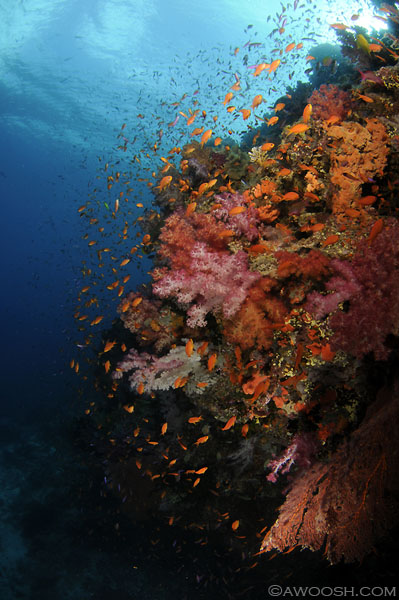
The little orange and pink fish are Anthias – and they are everywhere. It is easy to be mesmerized – the waving soft corals, the pulsing halos of fish, large schools of fusiliers rocketing by in big whooshes, sharks lurking in the periphery. It’s all pretty damn awesome…
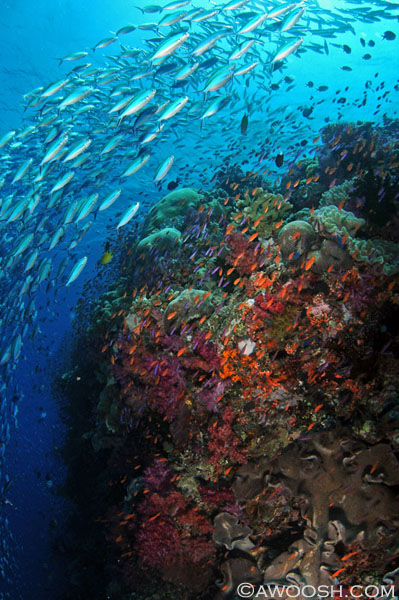
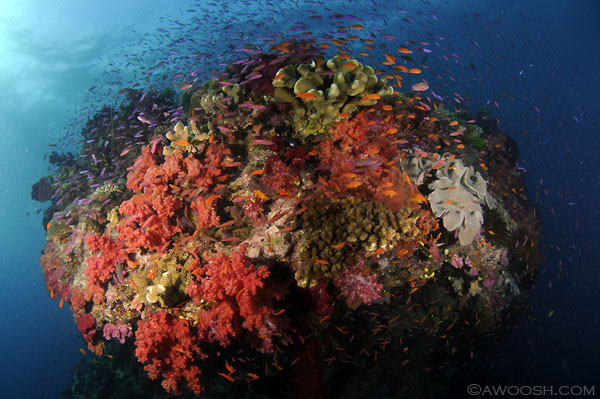
The Vatu waters often enjoy excellent visibility. On our first dive in this area in 2009, I was unfurling my strobes and futzing with my camera as I swam towards the reef from the boat. When I got my head out of the camera, this was what I saw:

And then this:

The only other places I have been diving with this kind of epic visibility were Cozumel (on good days) and the fresh water caverns of Mexico, which are surreal they are so clear.
The name of the site pictured above is “Wheat Field” and it is so called because of a huge proliferation of leather corals that completely encrust the top and upper portions of the taller formation.

These formations themselves are called “bommies”. A bommie (origin of the word likely Australian) is a tower of reef that rises out of the ocean floor. The Vatu waters have got many of these high-rises, and typically, one side (the windward to the current side) is covered with soft corals, and the leeward side (out of the current) is more populated by hard corals. The soft corals unfurl and puff themselves up to feed on plankton. They need the current to bring the nutrients to them.


As a diver, it is easy to get lost in the “big picture” when diving in Fiji. The reefs are so beautiful – lush and colourful and fluid – that it is almost a shame to get in close to look for the little critters that live there. But live there they do, and as a sampling, here is a line up of some of the usual suspects:
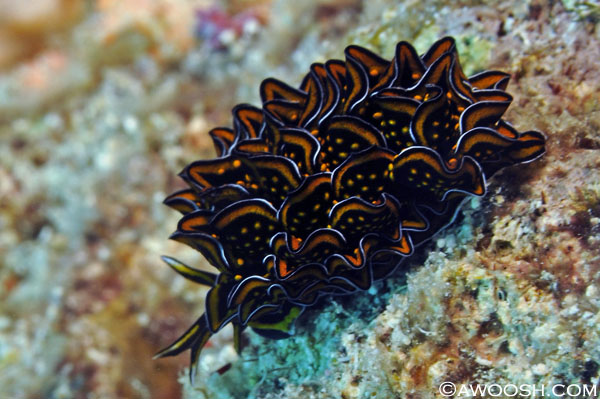
Peacock Nudibranch – Cyerce nigricans
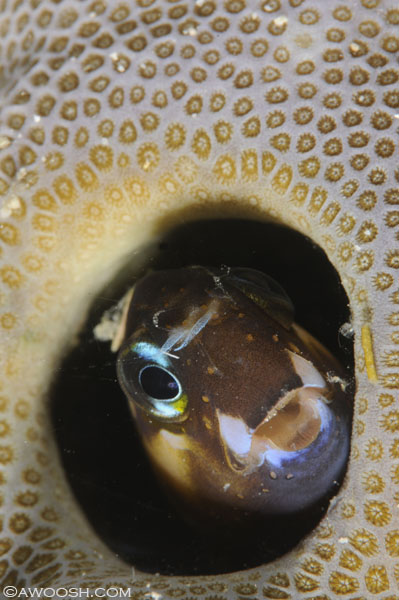
Unidentified Blennie
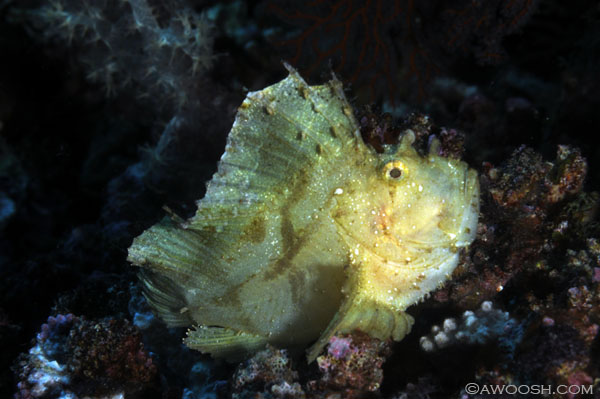
Leaf Scorpionfish – Taenianotus tricanthus
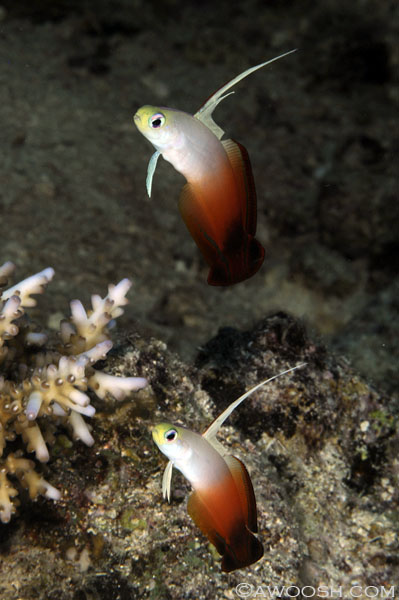
Fire Dartfish – Nemateleotris magnifica
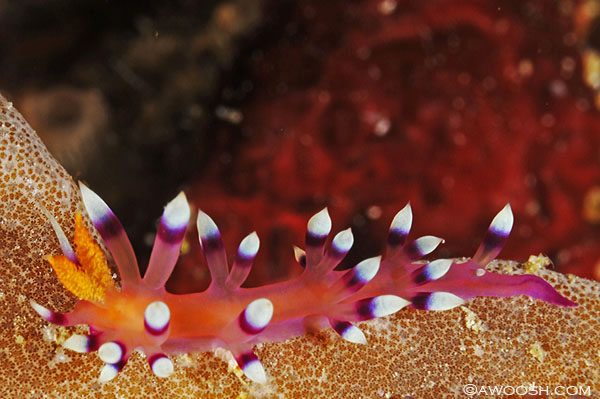
Desireable Flabellina Nudibranch – Flabellina exoptata
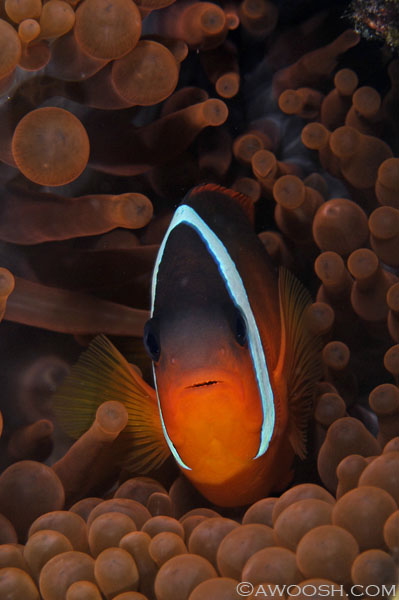
Tomato Anemonefish – Amphiprion frenatus (Female)
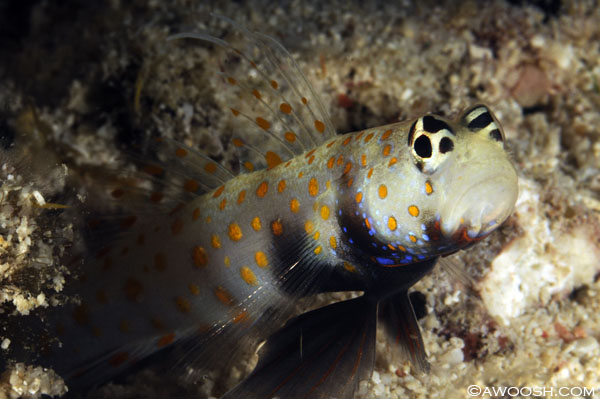
Spotted Shrimpgoby – Amblyeleotris guttata
I had a hard time culling pictures for this post as I have many in my galleries from this beautiful and photogenic location.
To see more images from Fiji (both topside and underwater), feel free to follow these links:
- Fiji – N’aia 2011 Gallery
- Fiji – Wananavu 2011 Gallery
- Fiji – Wananavu 2009 Gallery
- Fiji – Aggressor 2006 Gallery
- Fiji – Nananu-i-ra 2006 Gallery
Stay tuned for Episode 4…

2 Responses to My Favourite Place To Dive? – Part 3